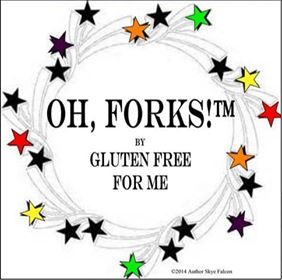If you live with Celiac disease, gluten sensitivity, or follow a strict gluten-free lifestyle, avoiding bread, pasta, and baked goods is just the beginning. Gluten is a sneaky little protein that hides in the most unexpected places, and even trace amounts can trigger health issues in those who are sensitive.
Welcome to the world of hidden gluten, where reading labels becomes a superpower and curiosity is your best friend. Let’s break down the places where gluten often hides, sometimes right under our noses.
Surprising Food Sources of Hidden Gluten
Condiments & Sauces & Spices
- Soy sauce: Traditional soy sauce is brewed with wheat. Opt for tamari or labeled gluten-free versions.
- Salad dressings: Some use wheat-based thickeners or malt vinegar.
- Gravy & sauces: Many are thickened with flour unless marked gluten-free.
- Barbecue & teriyaki sauces: Often contain soy sauce, malt vinegar, or modified starches.
- Spices: Many spices use fillers or flour that contain gluten.
Meat & Meat Substitutes
- Deli meats: Some contain fillers or seasonings with gluten.
- Meatballs, meatloaf: Often contain breadcrumbs.
- Veggie burgers & faux meats: May include seitan (pure wheat gluten) or wheat-based binders.
Packaged & Processed Foods
- Soups: Cream-based or thick soups often use flour.
- Flavored chips & snacks: Seasonings sometimes contain wheat or malt.
- Instant noodles & rice mixes: Seasoning packets often contain gluten.
Candy & Sweets
- Licorice & gummies: Often made with wheat flour as a binding agent.
- Chocolate bars: Some include cookie pieces, malt, or shared equipment.
Breakfast Foods
- Granola & cereals: May contain barley malt or contaminated oats.
- Oats: Naturally gluten-free but often processed on shared equipment unless certified GF.
Gluten in Non-Food Items
Gluten is not just in your pantry, it is in your bathroom and medicine cabinet, too. While gluten typically is not absorbed through the skin, cross-contact from hand to mouth can be a real concern, especially for kids or people with dermatitis herpetiformis (the skin form of Celiac).
Lip Products
- Lipsticks, glosses, balms: Anything applied to your mouth should be gluten-free.
Medications & Vitamins
- Prescription and over-the-counter drugs: Some tablets use wheat starch or gluten-containing fillers.
- Multivitamins & supplements: Always check the ingredient list or call the manufacturer.
Toothpaste & Mouthwash
- Gluten is not common here, but it can sneak in. Look for brands that confirm they’re gluten-free.
Play Dough (for kids)
- Traditional play dough often contains wheat. Opt for gluten-free alternatives if your child has Celiac or plays around food prep areas.
Hair Products
- Shampoo, Conditioner, Gel, Hairspray: Anything applied to your hair and scalp should be gluten-free.
Tips for Gluten Free Shopping:
- Look for certified gluten-free labels.
- Read beyond the “bolded” allergens: not all gluten-containing ingredients are listed as “wheat.”
- Learn gluten aliases: hydrolyzed wheat protein, malt extract, brewer’s yeast, durum, farrow, spelt.
- Contact manufacturers when in doubt.
Use Tech Tools:
- Apps like Find Me Gluten Free, Fig, or Gluten-Free Scanner help quickly identify safe products.
Living gluten-free can feel like solving a mystery every time you eat or shop, but with time, it gets easier. The keys are awareness, label-reading, and self-advocacy. Understanding where gluten hides help you take back control, protecting your health, your peace of mind, and your ability to enjoy food without fear.
Whether you are newly diagnosed or helping a loved one navigate this lifestyle, remember gluten-free living is not about perfection. It is about progress, protection, and feeling your best.
Citations.
OH, Forks!™
Empowering Intimacy
Celiac Disease Foundation
National Celiac Association
Beyond Celiac

